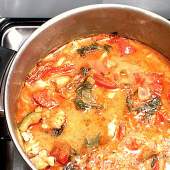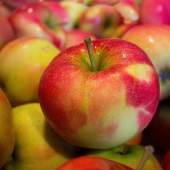Hawaii

Aloha! If there was ever a place where the culinary scene could rightly be defined as “fusion,” it’s Hawaii, America’s 50th state. And while winter-weary Chicagoans might flock there for its tropical temperatures, sandy beaches, and friendly people, its distinctive culinary scene deserves a look as well. And it is by no means limited to the offerings you might find at a luau.
You might be surprised to learn that Hawaii has few foods that are truly native to the islands. Over its history Hawaii’s cuisine has been heavily influenced by the many travelers who have passed through its environs, including explorers, missionaries, and workers from China, Japan, the Philippines, Korea, and Europe, many of them enroute to and from what would eventually be known as the American mainland. Prior to their traditions being transformed by these visitors, Hawaiians mostly dined on poi, a starchy paste made from the root of the taro plant; tropical fruits; fish and seaweed (known as limu); yams; and breadfruit (a part of a tropical tree and despite its name, considered to be more of a vegetable). That roasted pig you commonly associate with a luau is generally reserved only for very special occasions.
As its various wayfarers passed through, Hawaii’s cuisine underwent a (no pun intended) sea change; consequently, what the locals (and you if you visit) eat in Hawaii today is the result of many diverse cultures colorfully colliding with each other. What might you expect to find as part of a typical Hawaiian meal? Here are a few examples (and no, it will not include pineapple pizza, unless you absolutely insist):
Poke – Hawaii Magazine describes poke as not just a dish, but “a way of life” in the state. It may also be the most quintessentially Hawaiian food, and if you like raw seafood, you’ll love poke. Essentially, poke is composed of chunks of chopped, raw fish (often including octopus), combined with sea salt, onions, seaweed, and other components. Depending upon which culture is represented at a given establishment. these might include soy sauce, garlic, ginger, and/or tofu. Now, of course, there are plenty of places to get poke in the U.S. – the next best thing to visiting Hawaii.
Loco Moco – This is the Hawaiian equivalent of comfort food. A dish that is universally popular at high-end eateries and roadside diners alike, loco moco can be eaten at any time of the day: it consists of hamburger patties and fried eggs perched on a dome of white rice and covered with brown gravy. As you might imagine, this is considered a heavy meal, and consuming it might result in what the locals call a “kanak attack,” or the strong desire for a nap.
Saimin – Essentially, this is a savory egg noodle broth that originated in China. Again, as is true of most Hawaiian cuisine, its added ingredients are indicative of other cultures – they can include anything from Portuguese sausage, chow mein noodles, onions, kimchi, and even Spam. You will find it everywhere, including fast food franchises and sports venues. All of the above, and more, might make up a Hawaiian Plate or Plate Lunch, a standard restaurant menu item throughout the state.
Manapua – For eating on the go, you can’t go wrong with manapua, one of China’s contributions to Hawaii’s culinary scene. Everyone loves these soft, white buns infused with sweet pork.
How about dessert? Here are a few essentials:
Malasad, Pao Doce, Croissada – Hawaii’s famous sweet breads are mostly a product of Portuguese sugar and pineapple-farming immigrants, who brought with them their recipes for the malasada – a chewy and crispy (holeless) donut – and pao doce – a sweet bread loaf composed of sugar, eggs, flour, yeast, milk, and sometimes citrus fruit. (For Easter, it might include a hard-boiled egg at its center). There is also the croissada – Hawaii’s version of the croughnut (a croissant-malasada hybrid), which caught on after a local hotel injected it with Bavarian vanilla cream. We want one right now.
Shave Ice – Hawaii native Barack Obama is famously fond of this cold, refreshing dessert – the islands’ equivalent of a Sno-Cone, but closer in consistency to ice cream. What is it? A bowl of shredded ice topped with locally sourced sweet syrup. Flavors can include everything from tropical fruits and berries to colas and alcoholic drinks to spices to cotton candy. During one of the 44th president’s trips back home, The Christian Science Monitor devoted a whole tongue-in-cheek article to Obama’s shave ice flavor preferences and what they might indicate about his feelings about political compromise. Most Hawaiians, however, are content to think of it as a refreshing treat.
Fun fact: Shortly after the Civil War, a famous American author and humorist took advantage of a new passenger steamship service out of San Francisco to pay his first visit to the islands, and shared his experiences in a series of widely read newspaper columns. His positive feedback just might have launched Hawaii’s tourism industry. So thanks, Mark Twain!





